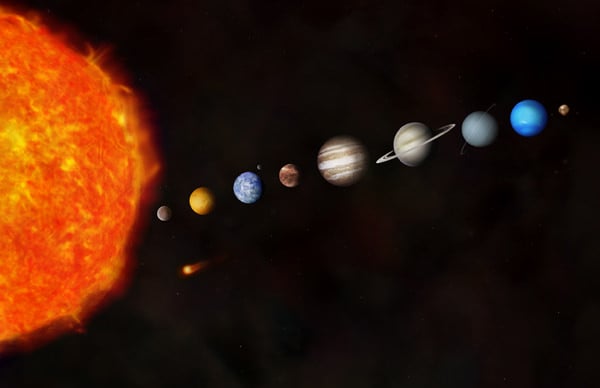Our solar system is beautiful and aging gracefully, but it might be even older than we originally thought, by as much as 2 million years. A group of scientists analyzed lead isotopes within a 1.49-kilo (3.2-pound) meteorite found in the Moroccan desert in 2004 and found evidence that suggests the mineral was formed 4.56 billion years ago, making the meteorite the oldest object ever found. This finding is between 300,000 and 1.9 million years older than previous estimates.
Marking the age of the Solar System has been defined as the time of formation of the first solid grains in the nebular disc surrounding the proto-Sun, and this has been done previously dating calcium–aluminium-rich inclusions in meteorites.
The team, led by Audrey Bouvier and Meenakshi Wadhwa of Arizona State University's the Center for Meteorite Studies, looked at the extent to which uranium-238 and uranium-235 isotopes had decayed into their daughter isotopes lead-207 and lead-206.
Previous studies that dated the solar system looked at the Efremovka and Allende meteorites found in Kazakhstan in 1962 and Mexico in 1969, respectively.
While the timing may not seem like a big difference for something that is billions of years old, Bouvier said in
New Scientist
that it could make a difference when pinning down the conditions that led to the solar system's formation, and those needed for other life-friendly planetary systems to form.
Their study was published by the journal Nature Geoscience.
Nature paper: Bouvier, A. & Wadhwa, M. Nature Geosci. advance online publication doi:10.1038/NGEO941 (2010).
Sources:
New Scientist
,
PhysOrg
 Universe Today
Universe Today
